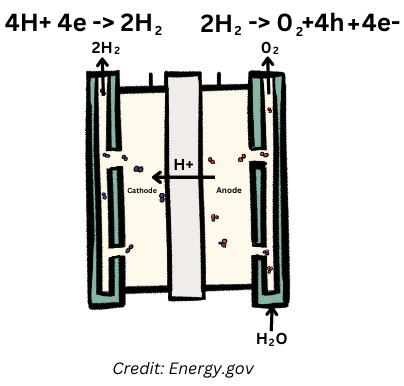Catalyst research offers a vital contribution to the production of hydrogen energy. Green hydrogen has so much potential to make an impact on the productivity and efficiency of future sustainable energy sources. So, there is merit in understanding what opportunities could come from catalyst advancements and hydrogen utilization. Learn more below about catalyst development and how it can enhance the creation of green hydrogen energy.
Catalysts and Hydrogen Production
To ensure that catalyst technologies can remain commercially viable, it is important that the catalyst characterization process analyses activity, selectivity and deactivation. Each factor plays a significant role in both reducing costs and improving the internal conditions of catalysts.
Catalysts can be made of any substance that can resist chemical attack and accelerate a favorable chemical reaction. By undertaking research into this technology, we can focus on catalyst optimization and its place within the process of electrolysis.
Electrolysis is the method in which green hydrogen is produced. This involves the splitting of water, through an electrolyte, by electricity from renewable energy sources, into its individual elements of hydrogen and oxygen. A basic diagram of an electrolyzer is shown below:

The electrolyzer above has a positive anode and negative cathode. An electrolyte circulates between the two. An electrical charge is applied through both and causes a reduction reaction at the cathode to release hydrogen. Oxidation occurs at the anode. However, an overpotential occurs in both reactions and can affect the rate of hydrogen production.
To overcome this issue of kinetic energy, and to increase the efficiency of the catalyst’s system, catalyst applications can be designed to decrease the overpotentials. This means that it will be easier to produce hydrogen, oxygen and renewable energy.
Commercial Opportunities
Hydrogen production using electrolysis combined with a catalyst is more sustainable and cleaner than creating it from carbon dioxide and the method of methane-steam reforming. Catalyst research can help us refine the processes used to create green hydrogen and create a springboard into the development of new technologies.
Green hydrogen energy needs to be produced using a catalyst that has been manufactured to induce the most appropriate conditions to create a chemical reaction. This means that research into catalysts should focus on:
· The interactions of reactants, intermediates, products and the catalyst itself
· How variables can impact the catalyst and the chemicals it produces
· Whether the catalyst will be permanently altered by the chemicals that it interacts with
The advancement of catalytic research offers commercial opportunities that can improve business processes. Commercial applications of catalyst technologies include hydrogen storage in batteries or larger fuel cells.
Water splitting can help create a renewable energy transfer. Instead of solely relying on expensive renewable energy resources or using metal or lithium batteries, the energy conversion can be created within a fuel cell. This cell has a high energy transition and avoids emitting pollution, as hydrogen only leaves water as its byproduct.
Sustainable energy and hydrogen production are only a few examples of where catalyst research can be put to good use. Further examples of catalytic advancements include:
· Turning renewable materials, such as corn and trees, into chemicals, like acrylates and acrylic acid, that can be utilized in coatings and paints
· Creating a hybrid catalyst to change carbon dioxide into a material that is similar to plastic for construction work
The Future of Catalysts
Catalyst advancements offer us the chance to create sustainable energy solutions through the production of green hydrogen. By continuing to research catalysts, we can improve their reactions, create superior sustainable fuels and provide advanced greener commercial technology.
Future research will focus on how catalyst characterization can improve a catalyst’s conditions to enhance chemical reactions, including in the production of fuel and hydrogen storage. It will also need to look into how different inorganic materials, such as clays and phosphonates, can be used to lower manufacturing costs.
Are you Ready to Utilize a Catalyst in Your Work?
Hiden Analytical can assist you with your catalyst research. They provide expert advice and can help you learn more about hydrogen and green energy production, as well as catalysis products and the analysis of their reactions.
Contact Hiden Analytical by calling +44 (0) 1925 445225, emailing or using the contact form.

